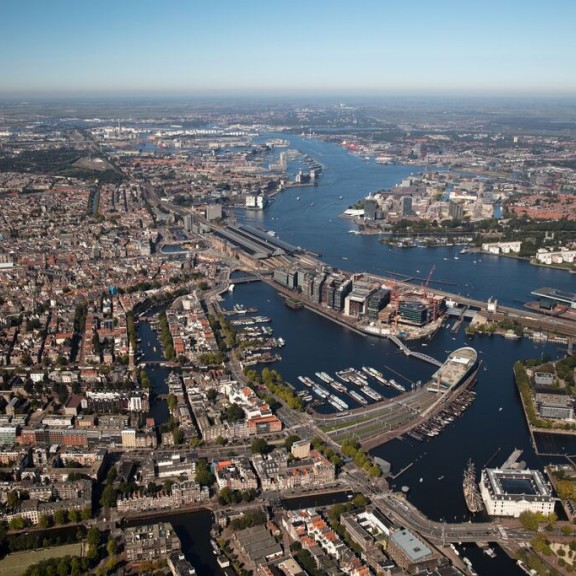
Hydrogen

Hydrogen for the port, city and region
Hydrogen (H2) is an energy carrier and resource with many potential applications, particularly for the industrial and transportation sectors. For example, hydrogen can be used as a replacement for natural gas in industrial processes, as a transport fuel, as a sustainable industrial raw material and as energy storage to replace batteries.
In the port of Amsterdam, we are working on the import, production and use of hydrogen and, together with partners, we are working on infrastructure to provide hydrogen to industry, the region and the city. The goal is to do this with only green hydrogen: hydrogen made with renewable energy sources, such as wind or solar power.
Import and storage
The demand for hydrogen in the Netherlands will soon outweigh the amount of green hydrogen we can produce here. That is why we are working with H2A - a consortium of local partners from the port and international partners - to set up a 100% green value chain. For transportation by ship, storage and transshipment, and the distribution of hydrogen. And together with ECOLOG we are investigating the possibilities for importing highly refrigerated (cryogenic) hydrogen.
Infrastructure
As an energy port, we want to have the infrastructure and capacity to transport and store hydrogen, providing hydrogen to industry and the region. The infrastructure for hydrogen contains pipelines underground and storage tanks above ground. For example, we are working with Hynetwork Services (a subsidiary of Gasunie), the national government and governments in the North Sea Canal region to create a regional hydrogen infrastructure, running from IJmuiden to the port area of Amsterdam via a national hydrogen network. In time, the intention is to build a more finely-meshed port network which allows individual companies to connect directly to this hydrogen network. Read more about the hydrogen infrastructure on the website of Hynetwork Services.
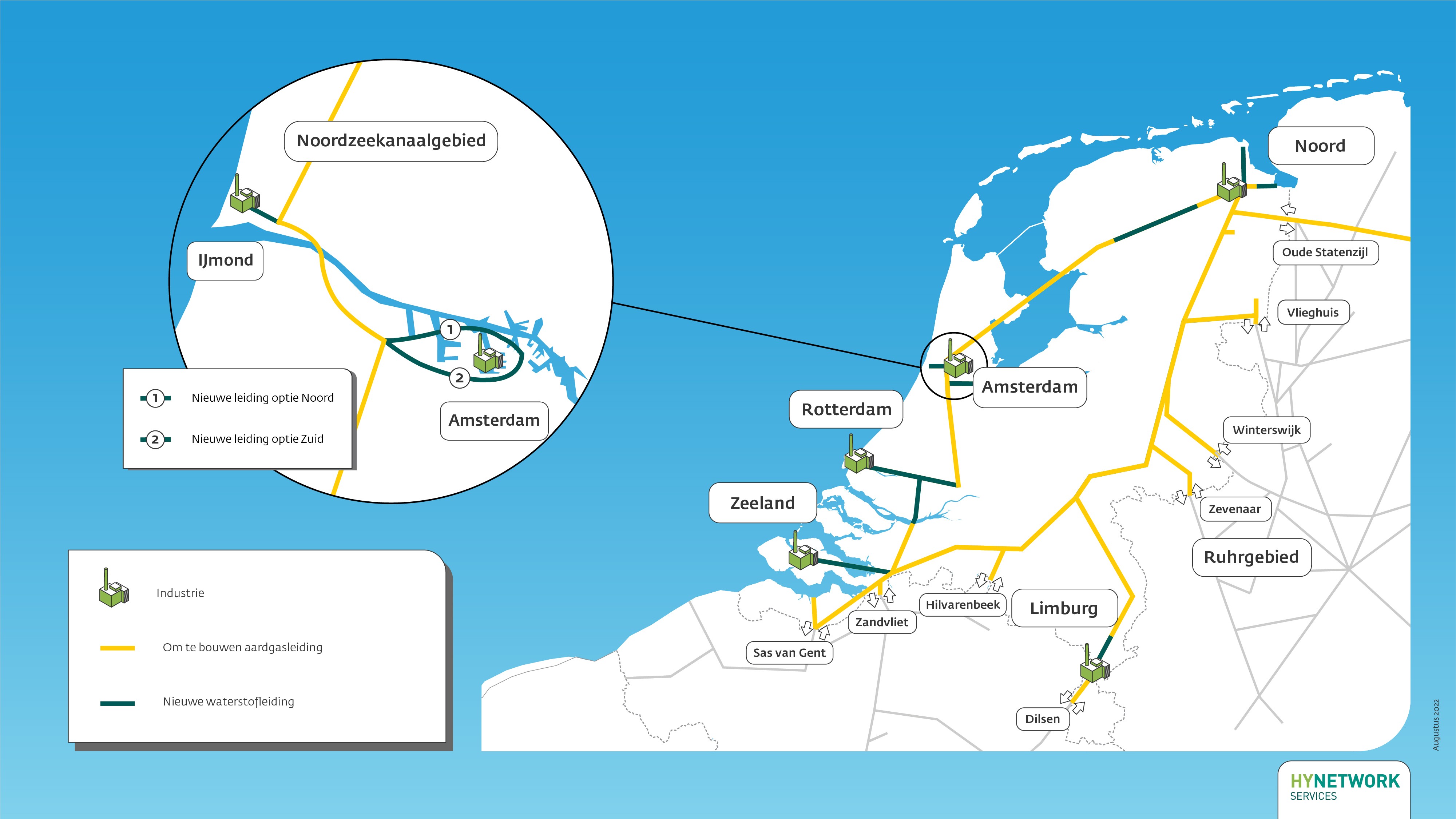
Production
Together with Tata Steel and HyCC, we are working on the establishment of a 100 MW hydrogen plant in IJmuiden, on the Tata Steel site: H2ermes. Using renewable electricity, this plant can make up to 15,000 tons of green hydrogen per year.
We also launched the H2era project with HyCC. With H2era, we are exploring the establishment of a 500-megawatt green hydrogen plant in the port. So far the largest hydrogen plant in the Netherlands. The plan is to have this plant ready by 2027.
Vattenfall also wants to build a new hydrogen production plant as part of its plans for the Hemweg site.
Usage
The green hydrogen produced and supplied in the port, will be used in industries as a substitute for fossil energy. For example, for its steel production process, Tata Steel plans to switch to green hydrogen completely.
Hydrogen will also be used as a sustainable raw material in the chemical industry and for the manufacture of sustainable fuels. For example, together with Synkero we are realizing a production facility for synthetic kerosene, which can significantly reduce CO2 emissions from flying. Many types of sustainable fuels are already produced in the port, including biofuels from waste.
With hydrogen filling stations in the port, such as those of OrangeGas and those of Holthausen Energy Points, the transport sector, especially trucks, garbage trucks and buses, but also (construction) generators and lifting equipment, such as forklifts, are already supplied with this clean fuel.
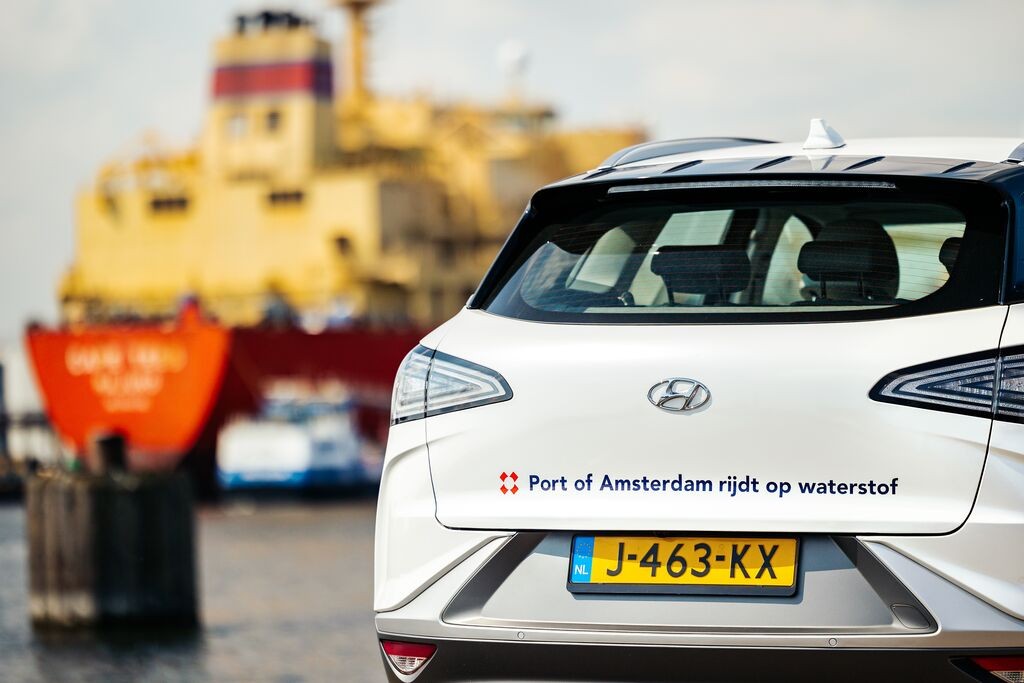
Frequently asked questions about hydrogen
All about hydrogen
Like any other fuel, hydrogen has its risks. However, with properly certified and professionally maintained equipment, the risks are no greater than in the case of LPG, for example.
Hydrogen is officially classified as 'highly toxic and explosive' (class 2.1), but petrol and LPG are also highly flammable. In practice, there is rarely a risk of explosion. This is because hydrogen is a light gas, so it rises rather than collecting just above the ground.
Yes, provided the forklift is equipped with a fuel cell. With this system the hydrogen from the tank is brought into contact with oxygen (O₂) from the air. The reaction between the two substances releases electricity, which is used to drive an electric motor.
A fuel cell only emits water (H₂O) and heat. There is therefore no question of a fuel being burned or harmful substances being released.
For transport solutions for environmentally friendly techniques, the Environmental Investment Allowance (Milieu-investeringsaftrek or MIA) and the Arbitrary Depreciation of Environmental Investments (Willekeurige afschrijving milieu-investeringen or Vamil) can be used.
Transport solutions with low or no CO2 emissions and which are innovative in nature can be eligible for DKTI transport. This is open annually up to and including 2021.
Electrifying the energy needs in industry, mobility and households is a good sustainability option. However, this is also very expensive, because it requires much more capacity from our electricity grid.
Research conducted by the province of Noord-Holland, the municipality of Amsterdam and Port of Amsterdam in cooperation with network operators Gasunie, TenneT and Alliander has shown that investments in hydrogen infrastructure are needed to substantially relieve the electricity grid in Noord-Holland.
We see green hydrogen as an important building block for the energy transition and a future product for the port. There is currently a classic chicken and egg dilemma: production is waiting for sufficient demand, users are waiting for the production of green hydrogen at an attractive price. That is why we at Port of Amsterdam are taking on the role of breaking this impasse. We are doing this by:
- taking the initiative to use hydrogen for one of our vessels;
- participating in research projects for large-scale electrolysis;
- informing and mobilising potential hydrogen buyers.
We are committed to scaling up the production of green hydrogen by electrolysis: green electricity is used to split water into hydrogen and oxygen. With the advent of large-scale wind farms off the coast, the North Sea Canal area is attractively positioned for the production of green hydrogen. The 100MW project with Nouryon and Tata Steel is a good example of this.
Hydrogen is a combustible gas, just like natural gas. That is why we have to be careful and we need effective user regulations and standards, just as there are for natural gas. However, before hydrogen burns, the right ratio to oxygen is required in addition to a flame. Hydrogen is not explosive in and of itself.
Other hydrogen projects
Neo Orbis
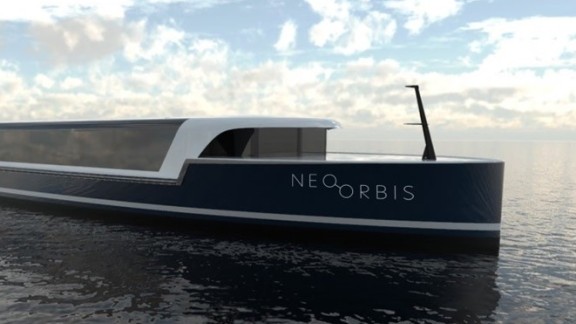
We believe that hydrogen can play a big part in creating a more sustainable shipping industry. That is why we are participating in H2ships, a pilot of Interreg North West Europe. With this pilot we are looking at how ships can sail using hydrogen. For this pilot, we are building an electric vessel that is powered by hydrogen.
Mission H2
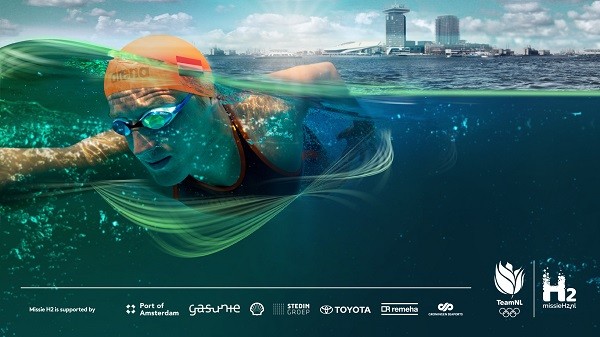
Under the name Mission H2, together with the Dutch Olympic Team (Team NL), Gasunie, Groningen Seaports, Shell, Remeha, Vopak, Eneco and Toyota, we are taking the lead in building the Dutch hydrogen economy. We develop campaigns with athletes and bring concrete projects to the attention.
Also interesting for you!




Contact our experts
For questions or more information about hydrogen


Joey van Elswijk
Q&A
Do you have more questions about hydrogen, and the ways it can be used? In a Q&A, we've listed a variety of questions and answers for you: